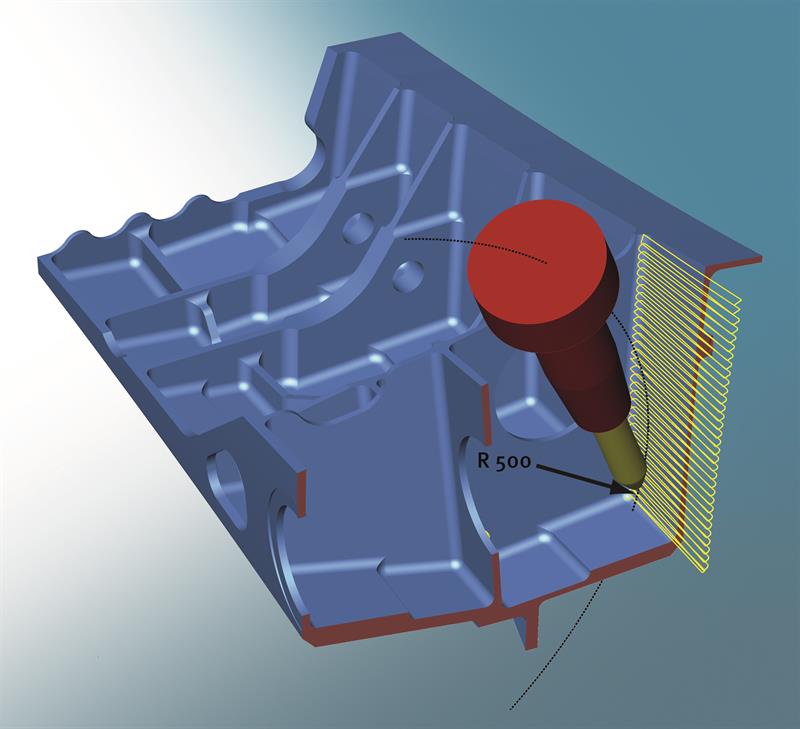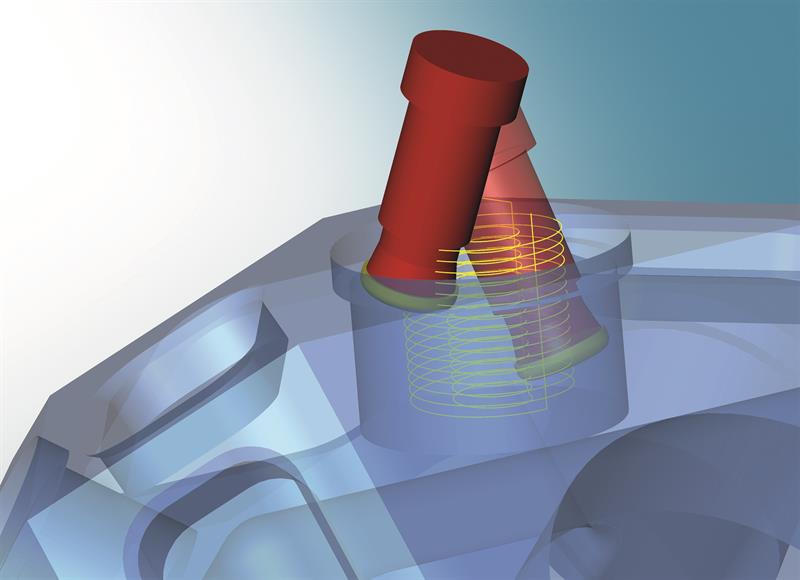The hyperMILL MAXX Machining performance package offers three powerful modules that deliver significant benefits in roughing, finishing and drilling applications.
The roughing module includes numerous cycles for trochoidal milling, resulting in fast and reliable machining. High speed roughing of both prismatic and curved component faces is supported, with all types of machining from 2D to 5-axis simultaneous accommodated. Trochoidal milling decreases cycle time and lengthens tool life, with stress on the tool and machine reduced at the same time.
Underpinning this rough milling capability is dynamic feed rate adjustment, with this related to actual cutting conditions, ensuring milling at the highest possible feed rates at all times. And innovative algorithms ensure that a constant chip volume is always removed by each tooth of the milling tool, delivering high utilisation rates without exposing the tool to undue stresses, resulting in roughing speeds that are 20 to 70% higher than before.
The hyperMILL MAXX Machining performance package finishing module includes pre-finishing and finishing of planes and free-form surfaces with various barrel cutters. Significant time savings can be achieved, along with a simultaneous improvement in surface quality. These benefits are accomplished with CAM strategies that use the special shape of the barrel tools to best advantage.
 New strategy for high efficient finishing of plane surfaces with conical barrel cutters
New strategy for high efficient finishing of plane surfaces with conical barrel cutters
Surface finish depends on the step-over distance and tool radius. Its quality decreases as the step-over increment increases, and improves as the tool radius gets larger. This means that if you want to shorten the machining time by increasing step-over, for example 5 mm instead of 0.5 mm, the tool radius has to be increased several times over to obtain a high surface quality. Since the tool diameter cannot be increased at will, barrel cutters only work with a segment of the desired tool diameter. Larger step-over distances can be realised due to such cutters’ bigger radii, delivering a high quality surface finish. The hyperMILL MAXX Machining finishing module realises fast, high-quality machining with general, tangential and tapered barrel cutters. All toolpaths are checked for collisions.
With ‘tangent plane machining’, Open Mind has developed a special CAM innovation for plane machining. Time savings of up to 90% can be achieved when using a conical barrel cutter. Path distances of six and eight mm are possible with their large radii. This results in optimal surfaces and longer tool life.
‘Tangent plane machining’ is equally well suited to straightforward and hard-to-reach planes. Toolpaths are generated automatically and checked for collisions.
Companies in various sectors, such as tool and mould making, aerospace or the auto industry, will be able to reap tremendous benefits from the straightforward and reliable programming strategies available with the hyperMILL MAXX Machining finishing module, says Open Mind.
‘Five-axis helical drilling’ is another performance strategy, this one allowing holes to be machined easily and efficiently. This cycle involves helical milling with a forward lead angle. A tilt angle to the side is then used as part of collision avoidance process.
 Five-axis helical drilling can reduce machining times by up to 25%
Five-axis helical drilling can reduce machining times by up to 25%
The advantages are that only one tool is needed for different drill diameters. Pre-drilling is not necessary and the strategy is very well suited for materials that are hard to cut. The process features safe chip removal and reduces stress on the tool.
Practical tests have shown ‘5-axis helical drilling’ can reduce machining time by 20 to 25%, compared to conventional drilling.










